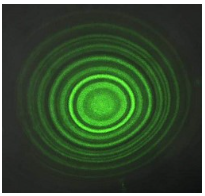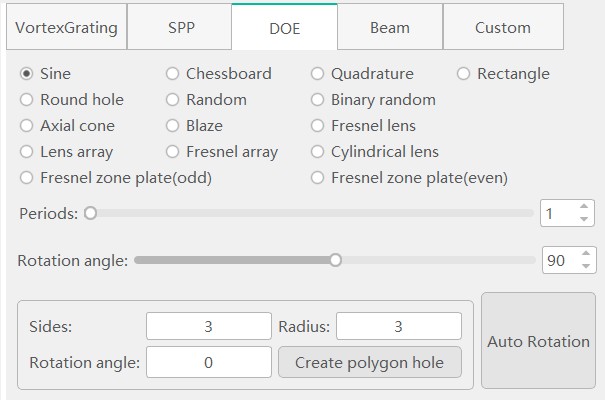
Introduction
UPOLabs diffractive optics simulation experimental system includes grayscale images of various devices such as rectangular gratings, sinusoidal gratings, blazed gratings, axicon lenses, checkerboard gratings, cylindrical lenses, random, circular aperture gratings, orthogonal, and Fresnel zone plates. Various diffraction experiments can be simulated.

The design method of DOE is similar to the method of traditional optical components. It is a process of calculating the parameters of the intermediate optical system according to the distribution function of the incident light field and the outgoing light field.
Diffraction Optical Element (DOE for short) is an important shaping technology and an emerging optical branch in recent years. Compared with traditional optical imaging systems, DOE has the advantages of unique dispersion and thermal difference characteristics, wide optimization freedom, and can be used for compression molding. It is a new generation of optical imaging systems. In recent years, the application of DOE in the field of Gaussian beam shaping technology has become more and more extensive.
The design method of DOE is similar to the traditional optical element design method, which is the process of calculating the parameters of the intermediate optical system according to the distribution function of the incident light field and the outgoing light field. The difference is that traditional optical components are based on the ray tracing method, while DOE is based on the Fresnel diffraction theory of light waves. Using the rapid verification capability of spatial light modulators, researchers can verify diffraction through a combination of simulation and actual optical path testing. grating design.

